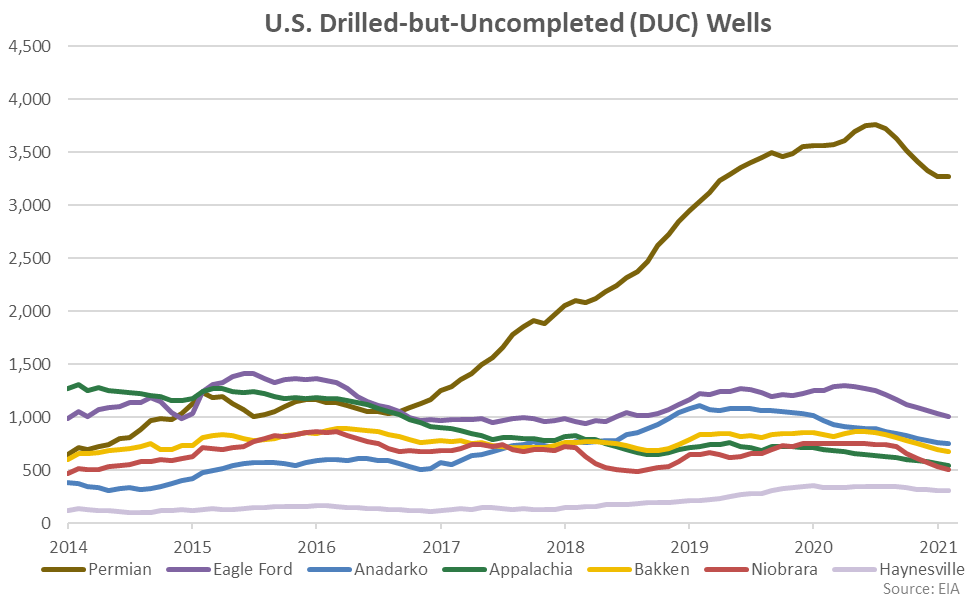EIA Drilling Productivity Report Update – Mar ’21
According to the EIA’s most recent Drilling Productivity Report, U.S. oil output is expected to decline throughout the month of April. The Drilling Productivity Report uses recent data on the total number of drilling rigs in operation, estimates of drilling productivity, and estimated changes in production from existing wells to provide estimated changes in oil production for the seven key regions shown below.
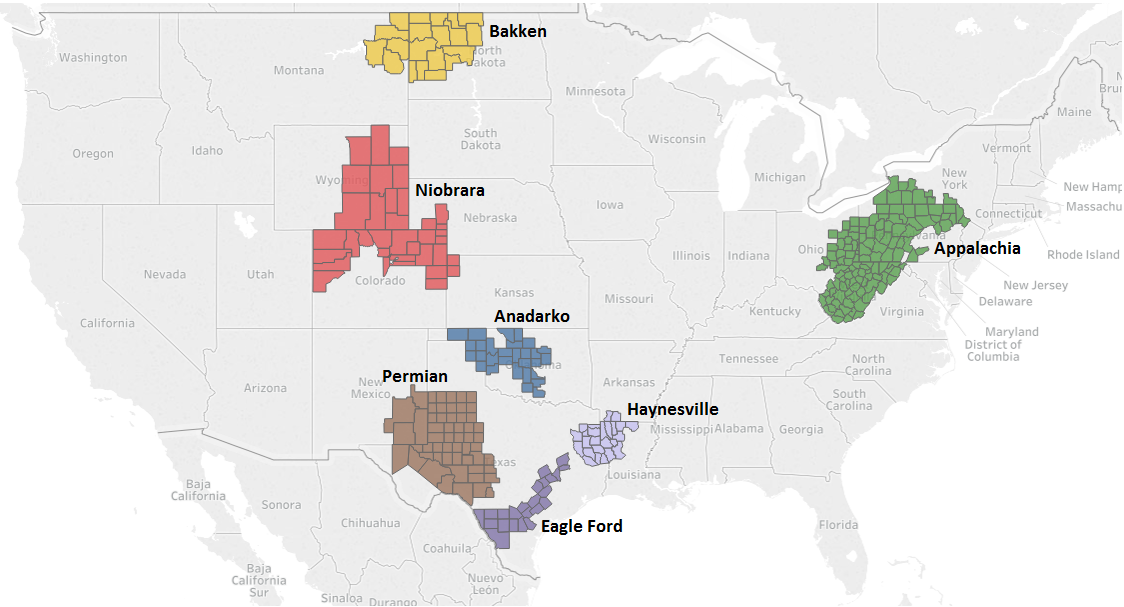
Mar ’21 production levels were revised 1,000 barrels per day (bpd), or <0.1%, above levels previously forecasted while finishing 453,000 bpd, or 6.4%, above Feb ’21 production levels. Apr ’21 production levels are expected to decline 47,000 bpd, or 0.6%, from the Mar ’21 revised production levels, however.
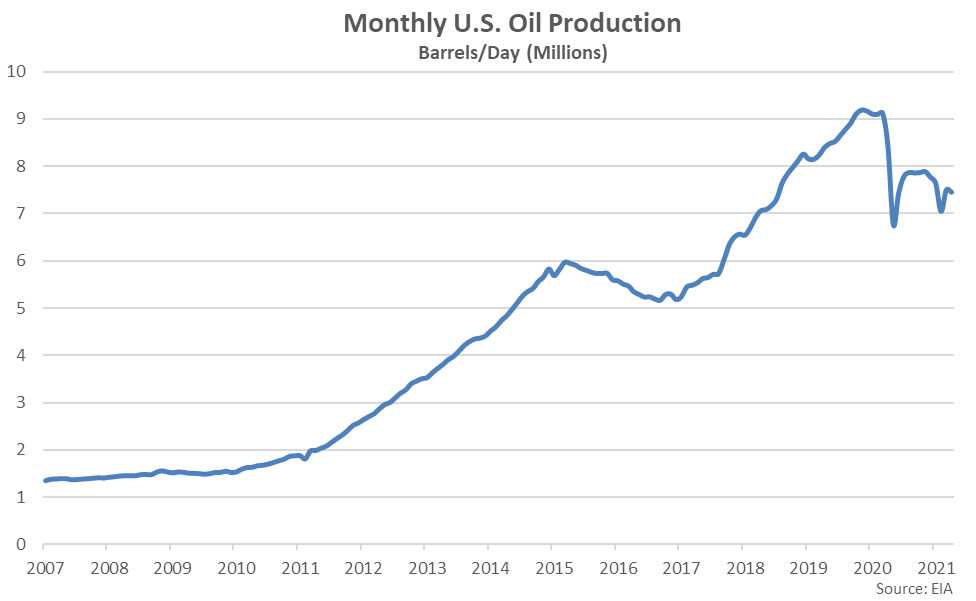
The Apr ’21 projected month-over-month decline in oil production would be the fourth experienced throughout the past five months. Record large month-over-month declines in oil production were experienced throughout the months of April and May 2020.
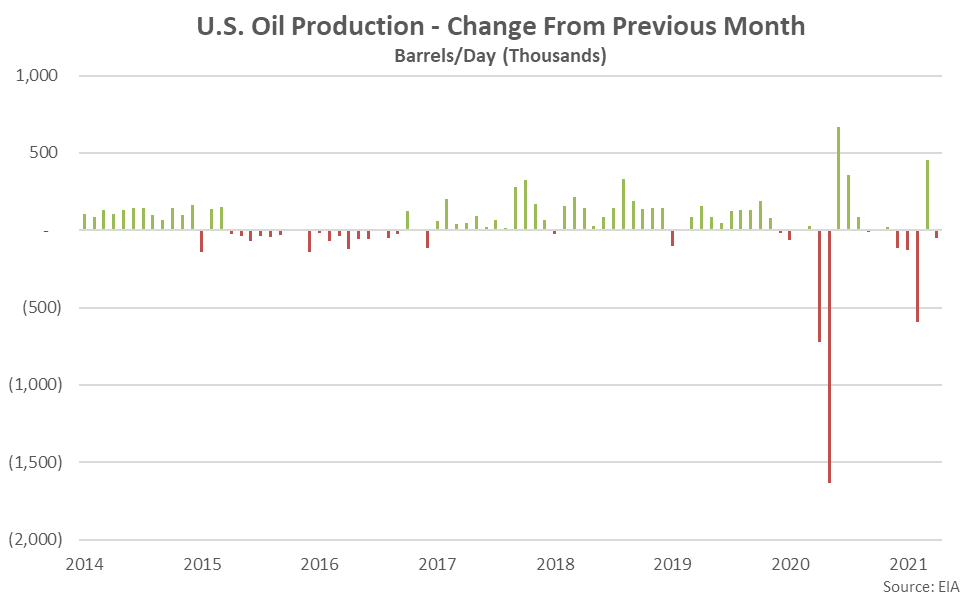
Oil production is expected to decline most significantly from the previous month within the Eagle Ford (-15,200 bpd), Niobrara (-15,100 bpd) and Anadarko (-14,500 bpd) regions. The expected declines in Eagle Ford, Niobrara and Anadarko production levels accounted for over 95% of the total expected decline in production.
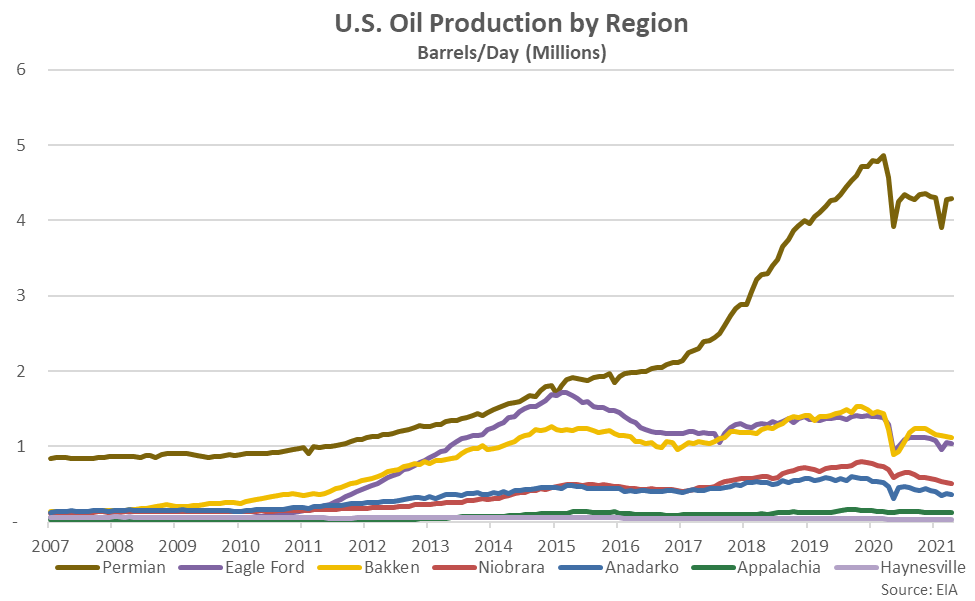
Apr ’21 oil production is expected to remain lower on a YOY basis for the 12th consecutive month, finishing 11.3% below previous year levels.
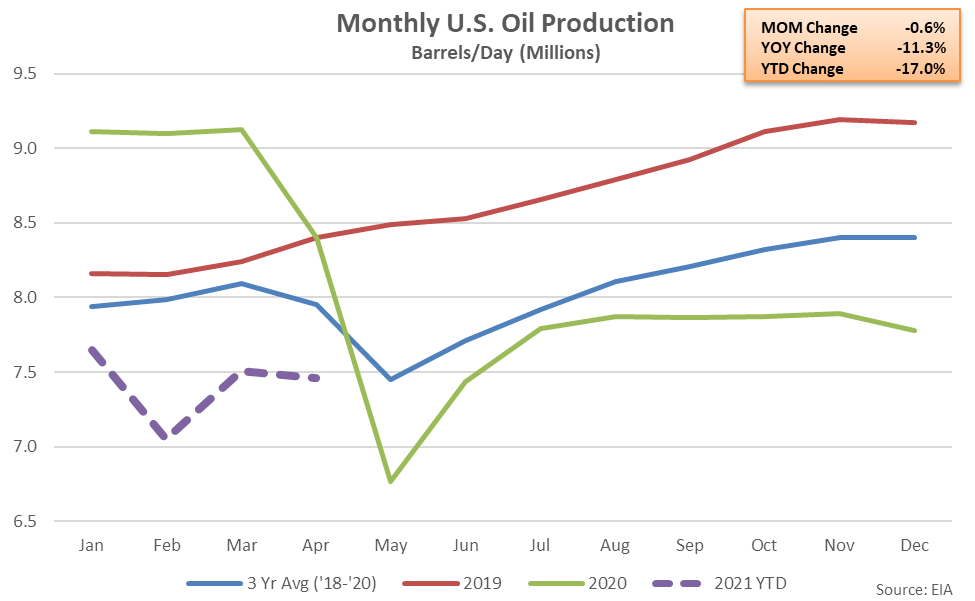
Feb ’21 U.S. drilled-but-uncompleted (DUC) wells declined 1.4% from the previous month, reaching a 27 month low level, overall. DUC wells, which have been drilled by producers but have not yet been made ready for production, have been compiled since Dec ’13. The monthly decline in DUC wells was the eighth experienced in a row.
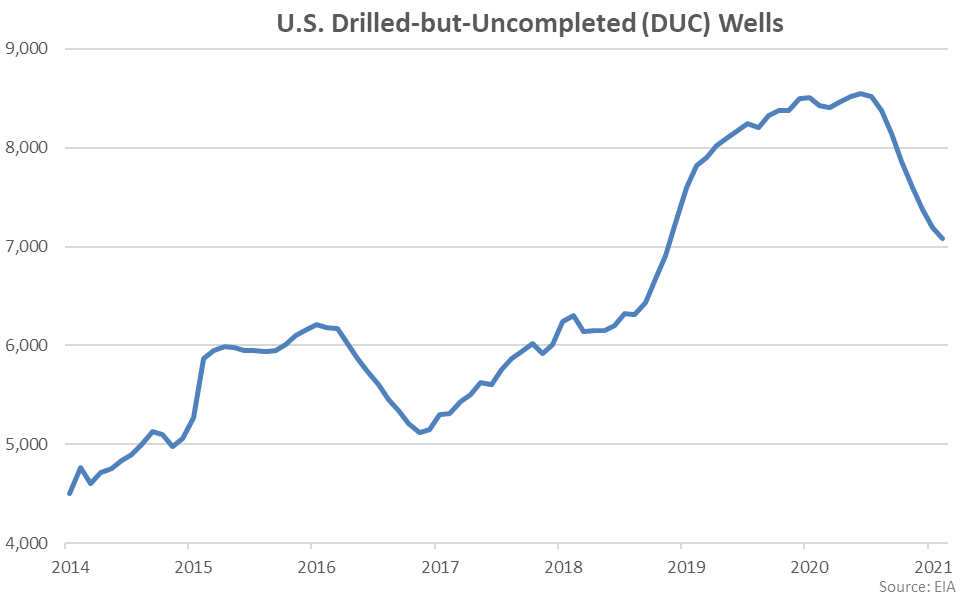
Niobrara DUC wells declined most significantly from the previous month throughout Feb ’21, followed by Bakken and Eagle Ford DUC wells. Appalachia DUC wells declined to the lowest level on record.
